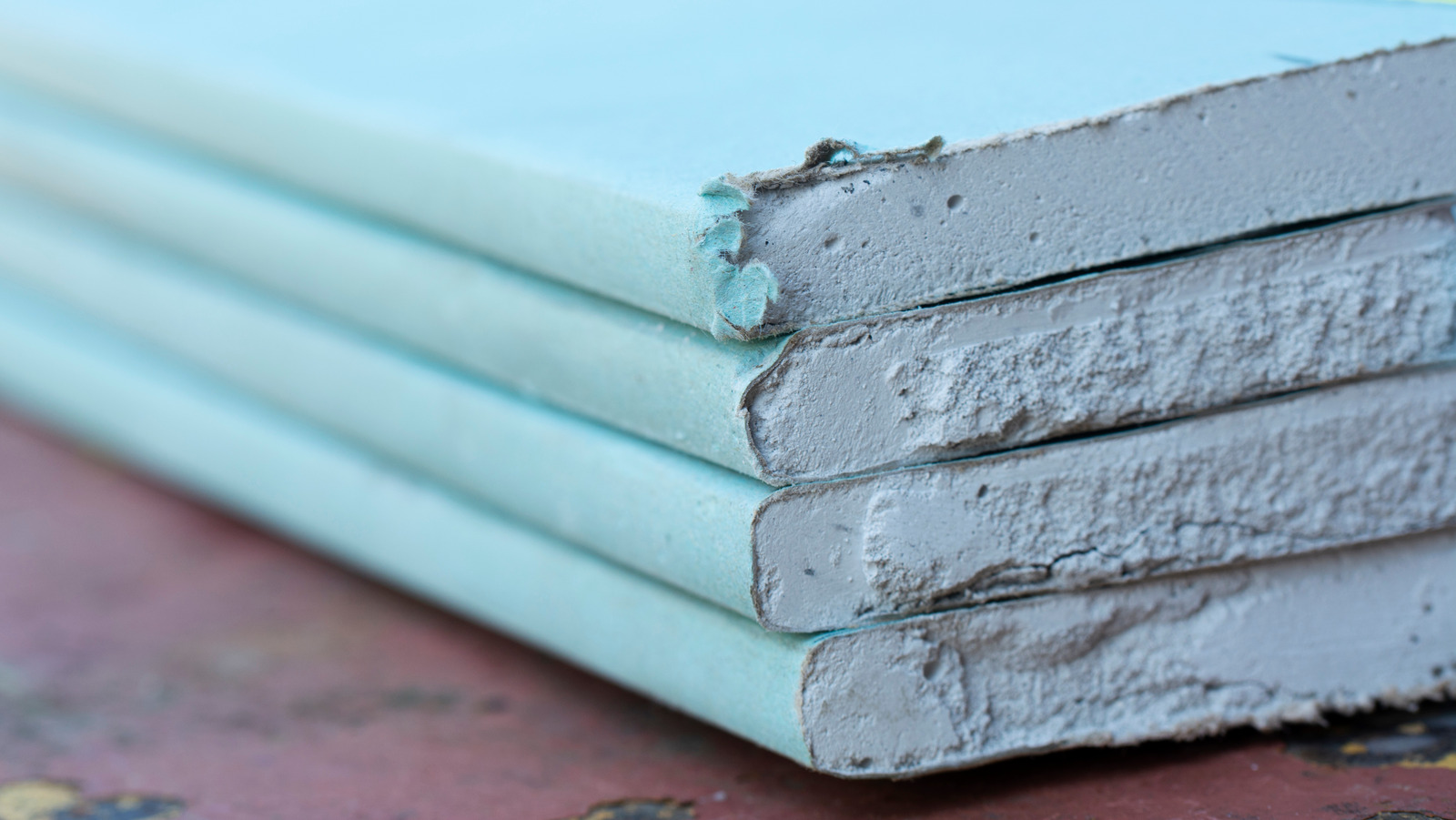Green Board Basics

Green board, also known as moisture-resistant drywall or water-resistant drywall, is a type of gypsum board specifically designed for use in areas prone to moisture, such as bathrooms, kitchens, and laundry rooms.
Green Board Composition
Green board is composed of a gypsum core sandwiched between two layers of paper. However, unlike standard drywall, the paper facing of green board is treated with a moisture-resistant material, typically a resin or acrylic coating. This coating helps to protect the gypsum core from moisture and prevent it from warping or deteriorating.
Properties of Green Board
Green board is designed to withstand moisture and humidity better than standard drywall. It offers several key properties that make it suitable for bathroom applications:
- Moisture Resistance: The moisture-resistant paper facing on green board helps to prevent water from penetrating the gypsum core, making it less susceptible to damage from spills or humidity.
- Durability: Green board is generally more durable than standard drywall and can withstand the wear and tear of bathroom use. It is also less prone to cracking or breaking.
- Mold Resistance: The moisture-resistant paper facing on green board can help to prevent mold growth, which is a common concern in humid environments.
Comparison with Other Bathroom Wall Materials
Green board is often compared to other common bathroom wall materials, such as drywall, tile backer board, and cement board. Here’s a comparison of their properties:
| Material | Moisture Resistance | Durability | Mold Resistance | Cost |
|---|---|---|---|---|
| Green Board | High | Medium | High | Medium |
| Drywall | Low | Low | Low | Low |
| Tile Backer Board | Very High | Very High | High | High |
| Cement Board | Very High | Very High | High | High |
Green board is a good option for bathroom walls when a balance of moisture resistance, durability, and cost is desired. While tile backer board and cement board offer superior moisture resistance and durability, they are also more expensive. Drywall, on the other hand, is the least expensive option but offers minimal moisture resistance and durability.
Green Board Applications in Bathrooms: What Is Green Board For Bathroom

Green board, also known as moisture-resistant drywall, is a popular choice for bathroom construction due to its ability to withstand high humidity levels. Its unique properties make it suitable for various bathroom areas, offering durability and longevity.
Green Board Applications in Different Bathroom Areas
Green board’s versatility allows it to be used in multiple areas of the bathroom, including showers, tubs, and walls.
- Showers: Green board serves as a reliable substrate for shower enclosures. It provides a moisture-resistant base for tile installation, ensuring a long-lasting and watertight shower.
- Tubs: Similar to showers, green board provides a stable and moisture-resistant base for tub surrounds. This prevents water damage and promotes a clean and functional tub area.
- Walls: Green board is an excellent choice for bathroom walls, offering a durable and moisture-resistant surface for paint or wallpaper. It helps prevent water damage and mold growth, maintaining a healthy bathroom environment.
Advantages of Using Green Board in Bathrooms
Green board’s moisture resistance is a key advantage in bathrooms. It effectively resists water damage, mold growth, and mildew, making it a suitable choice for wet environments.
- Moisture Resistance: Green board’s core is treated with a moisture-resistant material, making it less susceptible to water damage compared to standard drywall. This ensures a longer lifespan for bathroom walls and ceilings.
- Mold and Mildew Resistance: Green board’s resistance to moisture also reduces the risk of mold and mildew growth, which can pose health hazards. This makes it a safer and healthier option for bathroom construction.
- Durability: Green board is designed to withstand the harsh conditions of a bathroom, making it a durable and long-lasting option for bathroom construction. It can resist scratches, dents, and other damage, ensuring a long-lasting finish.
Green Board Installation in Bathrooms
Installing green board in bathrooms requires specific tools and techniques to ensure proper moisture resistance and a secure installation.
- Tools: Necessary tools include a tape measure, utility knife, drywall saw, level, drill, screws, and a moisture-resistant drywall compound.
- Techniques: The installation process involves measuring, cutting, and attaching the green board to the framing using screws. It is crucial to maintain a minimum 1/4 inch gap between the green board and any plumbing fixtures to allow for expansion and contraction due to moisture changes.
- Safety Precautions: Wear safety glasses and gloves during installation to protect your eyes and hands. Use a respirator when working with drywall compound to avoid inhaling dust particles.
Green Board vs. Alternatives

When considering bathroom wall materials, green board isn’t the only option. It’s crucial to weigh its pros and cons against other popular choices to determine the best fit for your project. This section explores the cost-effectiveness of green board compared to other materials and examines its advantages and disadvantages in terms of installation, longevity, and aesthetics.
Comparison of Key Features, What is green board for bathroom
To make an informed decision, it’s helpful to compare the key features of green board against other common bathroom wall materials, such as drywall, tile backer board, and cement board. The table below summarizes their moisture resistance, cost, and durability:
| Feature | Green Board | Drywall | Tile Backer Board | Cement Board |
|---|---|---|---|---|
| Moisture Resistance | High | Low | Very High | Very High |
| Cost | Moderate | Low | High | High |
| Durability | Good | Fair | Excellent | Excellent |
